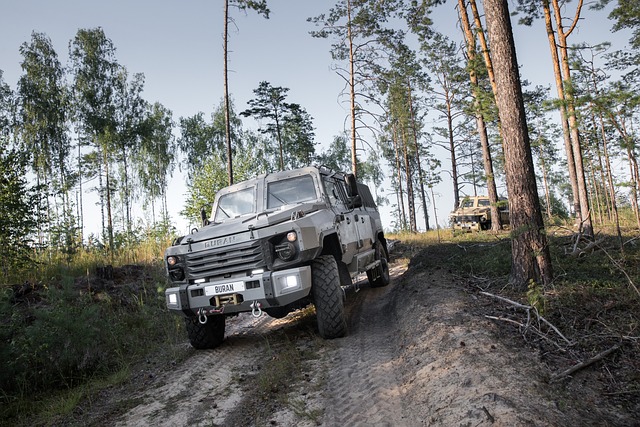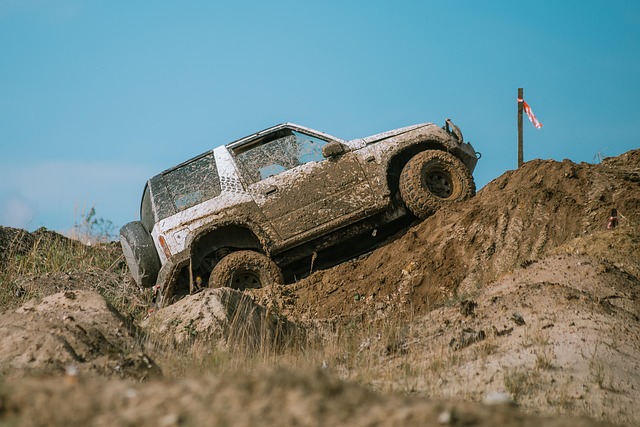RGV wheels are essential for truck winches, offering robust performance by evenly distributing weight and resisting corrosion. Manual winches are cost-effective and simple for light-duty tasks, while electric winches provide faster speeds, increased pulling power, and advanced functionalities for heavier duties. Selecting the right winch requires considering towing capacity, terrain type, and compatibility with RGV wheels to optimize performance and safety. Safe installation involves verifying mounting points, proper alignment, and adherence to strict safety guidelines. Regular maintenance, including frequent inspections and prompt replacement of worn parts, ensures winches and RGV wheels remain in top condition for efficient and safe operations.
“Enhance your truck’s capabilities with the power of winches, specifically tailored for RGV (Rigid General Vehicle) wheels. This comprehensive guide explores the intricate relationship between RGV wheels and their pivotal role in supporting efficient truck winches. We delve into the distinct types—manual and electric winches—offering insights on selection, installation, safety, and maintenance. Maximize your towing potential and ensure reliable performance with expert advice tailored for RGV wheel owners.”
- Understanding RGV Wheels and Their Role in Truck Winches
- Types of Truck Winches: Manual vs. Electric
- Choosing the Right Winch for Your RGV Wheels
- Installation and Safety Guidelines for Truck Winches
- Maintenance Tips to Keep Your Winch Running Smoothly
Understanding RGV Wheels and Their Role in Truck Winches

RGV (Rigid Grid Vehicle) wheels are a critical component in the world of truck winches, playing a pivotal role in their functionality and performance. These specialized wheels are designed to handle the immense weight and torque generated by heavy-duty trucks, ensuring smooth and efficient operation during towing or lifting operations. Their robust construction allows them to withstand harsh conditions, making them ideal for rugged terrain and demanding applications.
The unique design of RGV wheels contributes significantly to the overall capability of truck winches. With their ability to distribute weight evenly, these wheels minimize the risk of tire failure and reduce the chances of uneven wear, extending the lifespan of the winch system. Moreover, their high-quality materials and precision engineering make them resistant to corrosion, ensuring optimal performance in various environmental conditions.
Types of Truck Winches: Manual vs. Electric

Truck winches come in two primary types: manual and electric. Manual winches, often referred to as hand-crank or mechanical winches, rely on human power for operation, typically requiring users to crank a handle to apply torque to the drum. These winches are usually more affordable and simpler in design, making them suitable for lighter duty applications. They also tend to be easier to maintain due to their fewer moving parts.
Electric winches, on the other hand, use a motor to turn the drum, offering significant advantages like faster lifting speeds and more powerful pulling capabilities. They are particularly preferred for heavier-duty tasks and off-road adventures. Incorporating features such as adjustable cable tensioning and wireless remote controls, electric winches enhance both safety and convenience. Moreover, their performance is often enhanced by robust RGV wheels, ensuring optimal grip and stability during challenging terrain navigation.
Choosing the Right Winch for Your RGV Wheels

Selecting the ideal winch for your RGV (Rigid Grid Vehicle) wheels is a crucial decision, as it directly impacts the performance and safety of your truck in various terrain conditions. When considering winches for RGVs, several factors come into play. Firstly, understand the towing capacity required; different RGVs have varying weight capacities, so matching the winch’s strength to your vehicle’s needs is essential.
Secondly, consider the type of terrain you’ll be navigating. Will you be using your truck for off-road adventures or primarily on paved roads? Different winches are designed for specific purposes; some excel in rough terrain with rugged construction, while others offer smoother operation for everyday driving. Additionally, ensure compatibility with your RGV’s wheel size and tread pattern to optimize performance and avoid damage.
Installation and Safety Guidelines for Truck Winches

The installation and safe operation of truck winches, especially those with robust RGV wheels, necessitate careful consideration. First, ensure your vehicle is equipped with the proper mounting points to accommodate the winch’s weight and distribution. Proper alignment of the winch with the truck’s frame is crucial for optimal performance and to prevent damage during use.
Safety guidelines must be followed rigorously. This includes ensuring the winch is securely fastened, all safety straps are in place, and the vehicle is parked on a level surface before operation. Never exceed the winch’s rated capacity; doing so can lead to catastrophic failure. Regular maintenance, including inspection of RGV wheels, cables, and mechanical components, is essential to safeguard against unexpected malfunctions while towing or lifting.
Maintenance Tips to Keep Your Winch Running Smoothly

Regular maintenance is key to keeping your winch in top condition and ensuring it performs optimally when you need it most. Start by inspecting the winch regularly for any signs of wear, damage, or loose components. Pay close attention to the cables, as they are under constant strain and can show signs of fraying or rust over time. Keep an eye on the winching mechanism itself, making sure everything is in proper working order and well-lubricated. Regular cleaning and lubrication of the winch’s moving parts will prevent corrosion and friction issues.
When it comes to rgv wheels (referring to robust, reliable off-road wheels) that support your winch, ensure they are properly inflated and balanced. Underinflation can lead to uneven wear and reduced stability, while an imbalance can cause excessive vibration and potential damage to the wheel and suspension system. Remember to replace worn-out components promptly, such as cables or sheaves, to maintain the overall efficiency and safety of your winch setup.
Understanding the role of RGV wheels in truck winches is paramount when selecting the ideal towing solution. By choosing the right winch type, be it manual or electric, and adhering to safety guidelines during installation, you ensure optimal performance. Regular maintenance is key to keeping your winch in top condition, ensuring smooth towing experiences for years to come, with reliable RGV wheel support.
